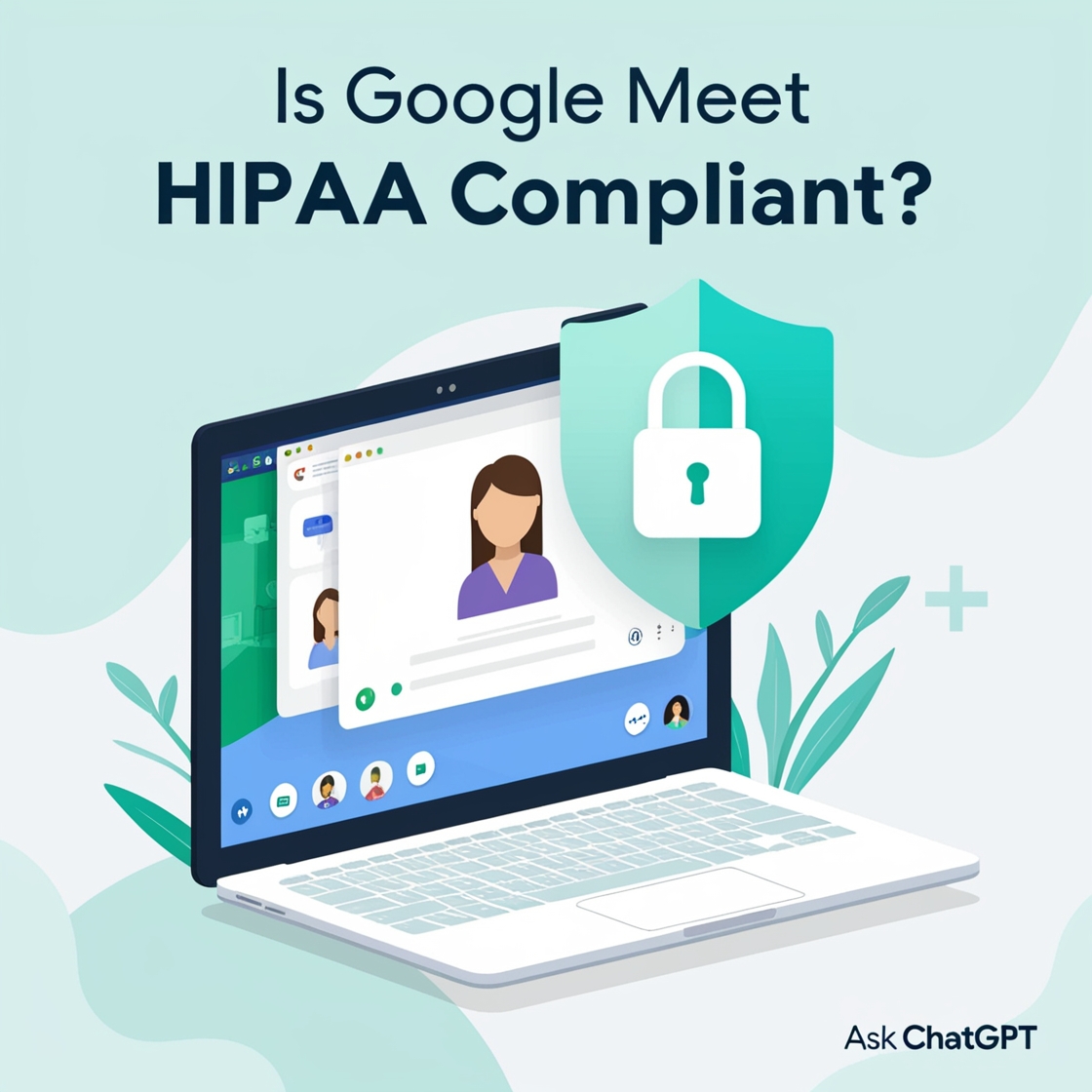Understanding HIPAA and Its Importance
The Health Insurance Portability and Accountability Act (HIPAA) is a U.S. regulation designed to protect sensitive patient information. Covered entities—such as healthcare providers, insurers, and their business associates—must ensure that any platform used to store or transmit protected health information (PHI) adheres to HIPAA standards.
In the digital age, virtual communication platforms like Google Meet have become crucial tools for healthcare providers. But the burning question remains: Is Google Meet HIPAA compliant?
What Does HIPAA Compliance Entail for Video Conferencing Tools?
For any video conferencing software to be HIPAA compliant, it must:
- Use end-to-end encryption to safeguard PHI.
- Provide access controls and secure login protocols.
- Offer audit trails to track user activity.
- Enter into a Business Associate Agreement (BAA) with the covered entity.
- Maintain data integrity without unauthorized modifications.
These criteria ensure that patient data stays protected throughout transmission.
Google Meet’s Security Measures
Google Meet is part of Google Workspace (formerly G Suite), which offers enterprise-level security. Some security features include:
- Encryption in Transit: All video streams are encrypted during transit.
- Access Control: Users must authenticate through their Google account.
- Data Protection: Google commits to not using customer data for advertising.
You can explore more about Google Meet’s security features on Google’s official security page.
Does Google Meet Sign a Business Associate Agreement (BAA)?
Yes, Google does provide a BAA—but only under specific circumstances. The BAA is available to Google Workspace customers who use services like Gmail, Drive, Calendar, and Meet for HIPAA-compliant workflows.
However, simply using Google Meet does not make you compliant. The covered entity must:
- Sign a BAA with Google.
- Configure settings to ensure data is protected.
- Train staff on HIPAA-compliant usage.
You can learn more about BAAs from Google’s documentation here.
How to Use Google Meet in a HIPAA-Compliant Manner
1. Sign a BAA with Google
Before using Google Meet for telehealth, your organization must sign a Business Associate Agreement with Google.
2. Use Google Workspace Enterprise or Business Plans
Free versions of Google Meet are not covered under the BAA. You must subscribe to a paid plan that supports HIPAA compliance.
3. Configure Security Settings
Enable features like two-factor authentication, restrict meeting access to authorized users, and disable recording unless securely stored.
4. Train Your Workforce
Employees must understand how to handle PHI securely when using video conferencing platforms.
Limitations to Consider
While Google Meet offers strong security features, compliance ultimately depends on how the platform is used. For example:
- Recordings must be stored securely, preferably in encrypted drives.
- Unauthorized meeting access must be prevented through proper controls.
- Healthcare providers must avoid sharing sensitive information in insecure ways.
Alternatives to Google Meet for HIPAA Compliance
Some healthcare organizations may prefer platforms specifically built for telehealth, such as:
- Zoom for Healthcare – HIPAA-compliant with BAA options.
- Doxy.me – A telemedicine-focused platform.
- Microsoft Teams – Also offers HIPAA-compliant plans.
Final Verdict: Is Google Meet HIPAA Compliant?
Yes, Google Meet can be HIPAA compliant—but only when:
- It is used as part of a paid Google Workspace plan.
- A Business Associate Agreement is signed.
- Proper security measures are implemented by the covered entity.
Without these steps, using Google Meet to handle PHI could lead to HIPAA violations.
Conclusion
Google Meet offers robust security features, making it a viable option for HIPAA-compliant telehealth sessions when configured correctly. However, compliance is a shared responsibility—both Google and the healthcare provider must play their part.
For more guidance on securing telehealth communications, refer to the U.S. Department of Health & Human Services (HHS) guidelines.



